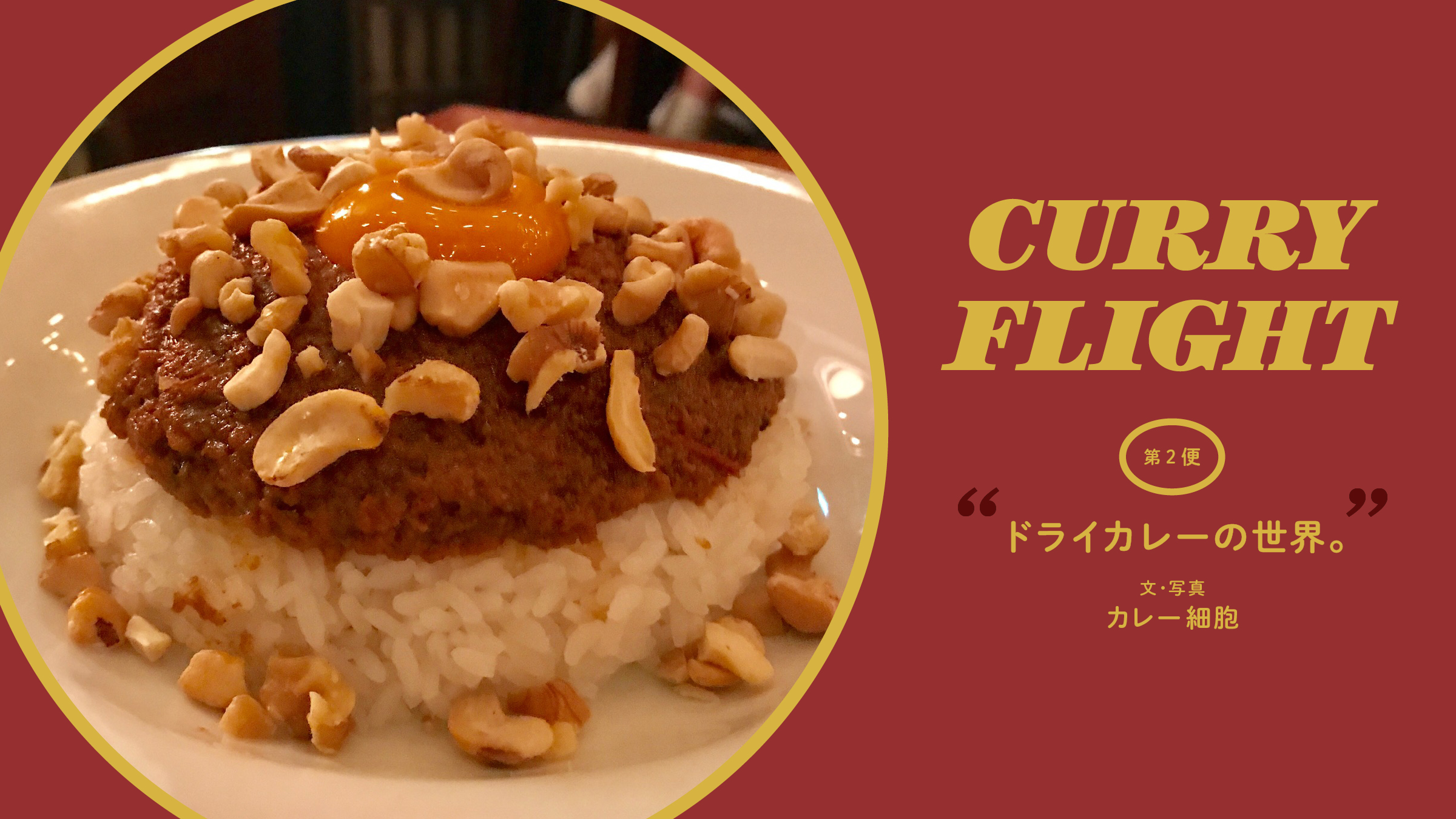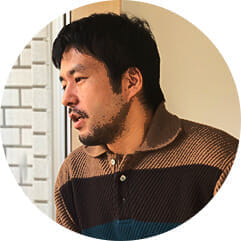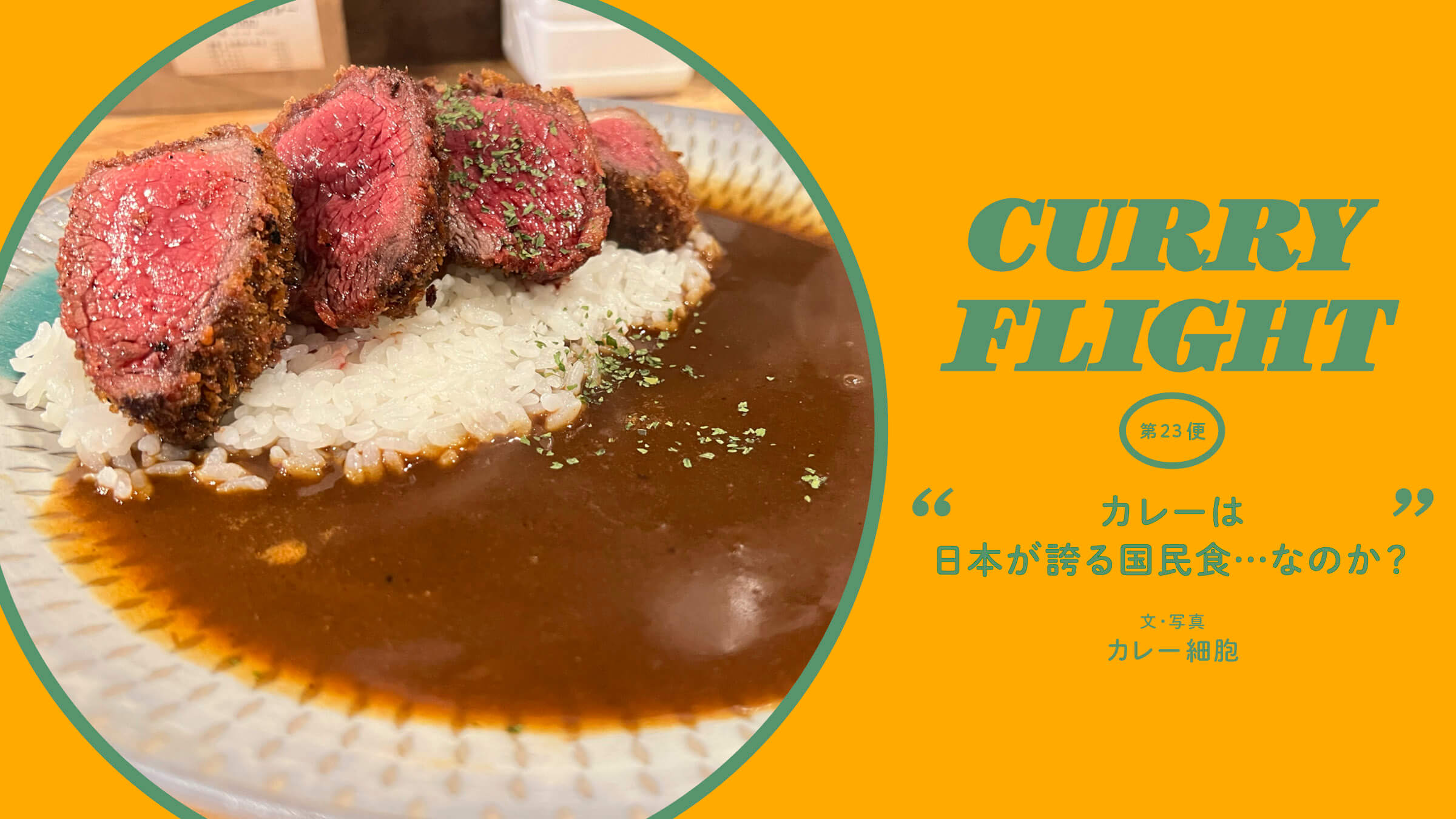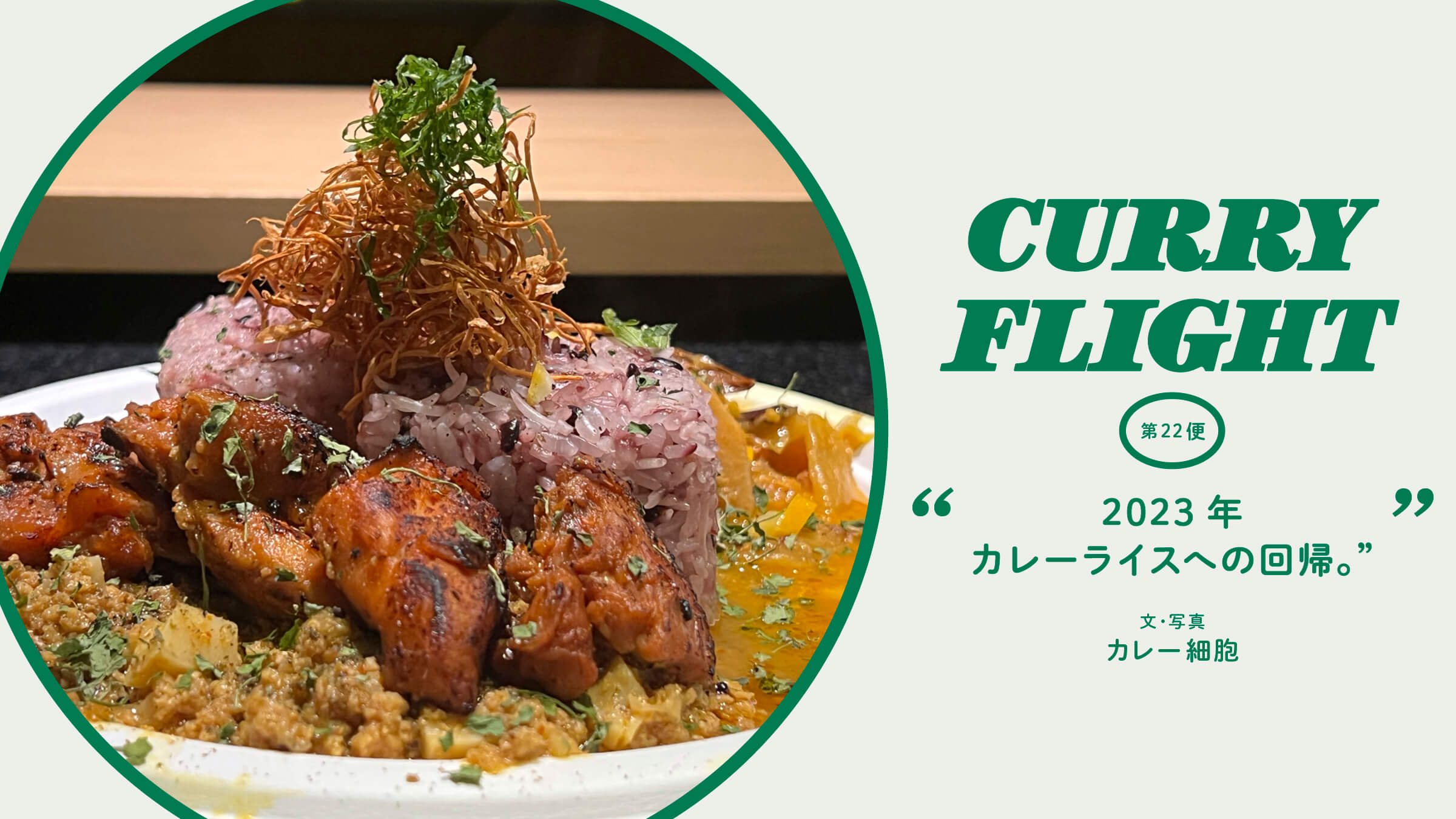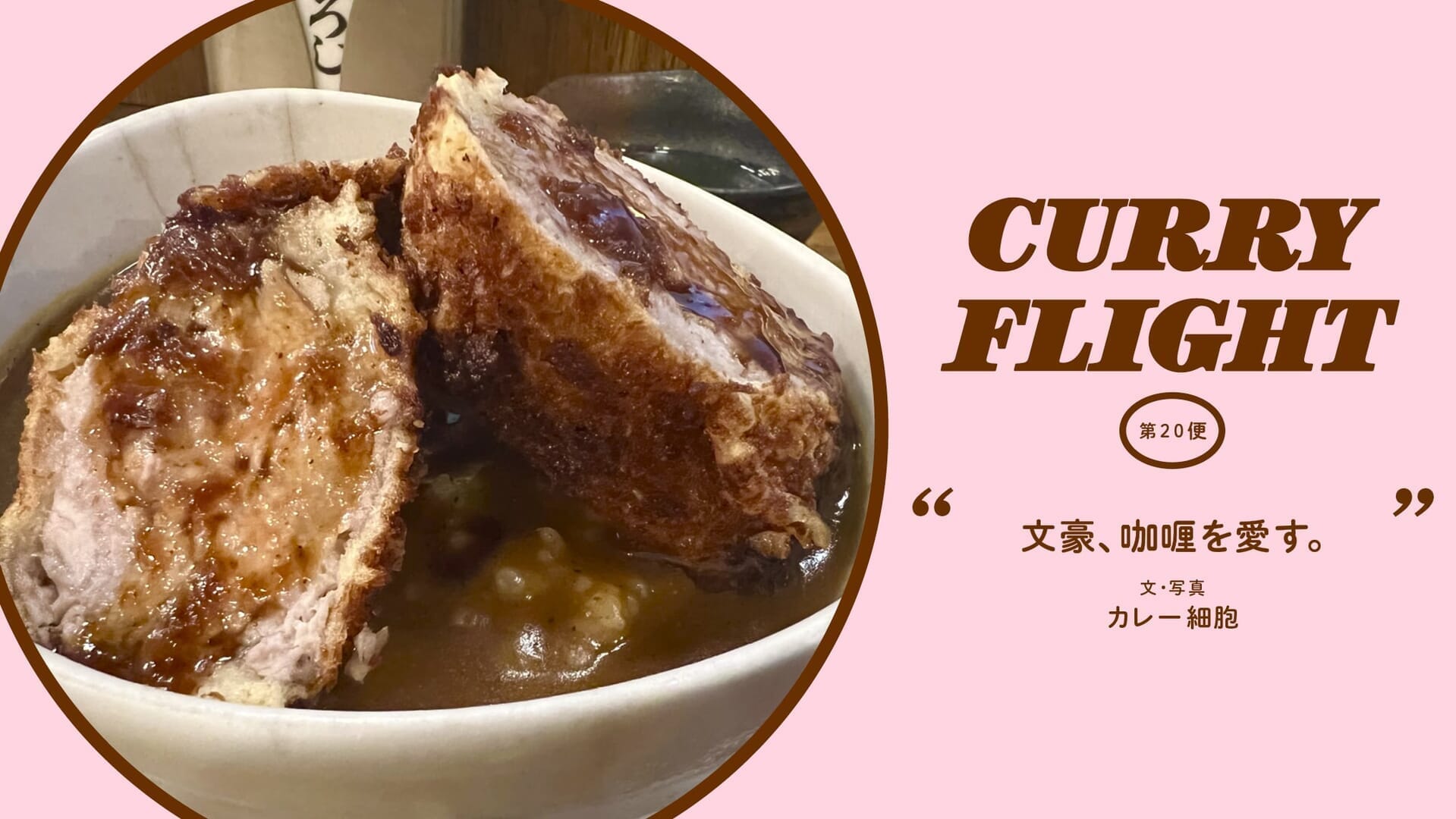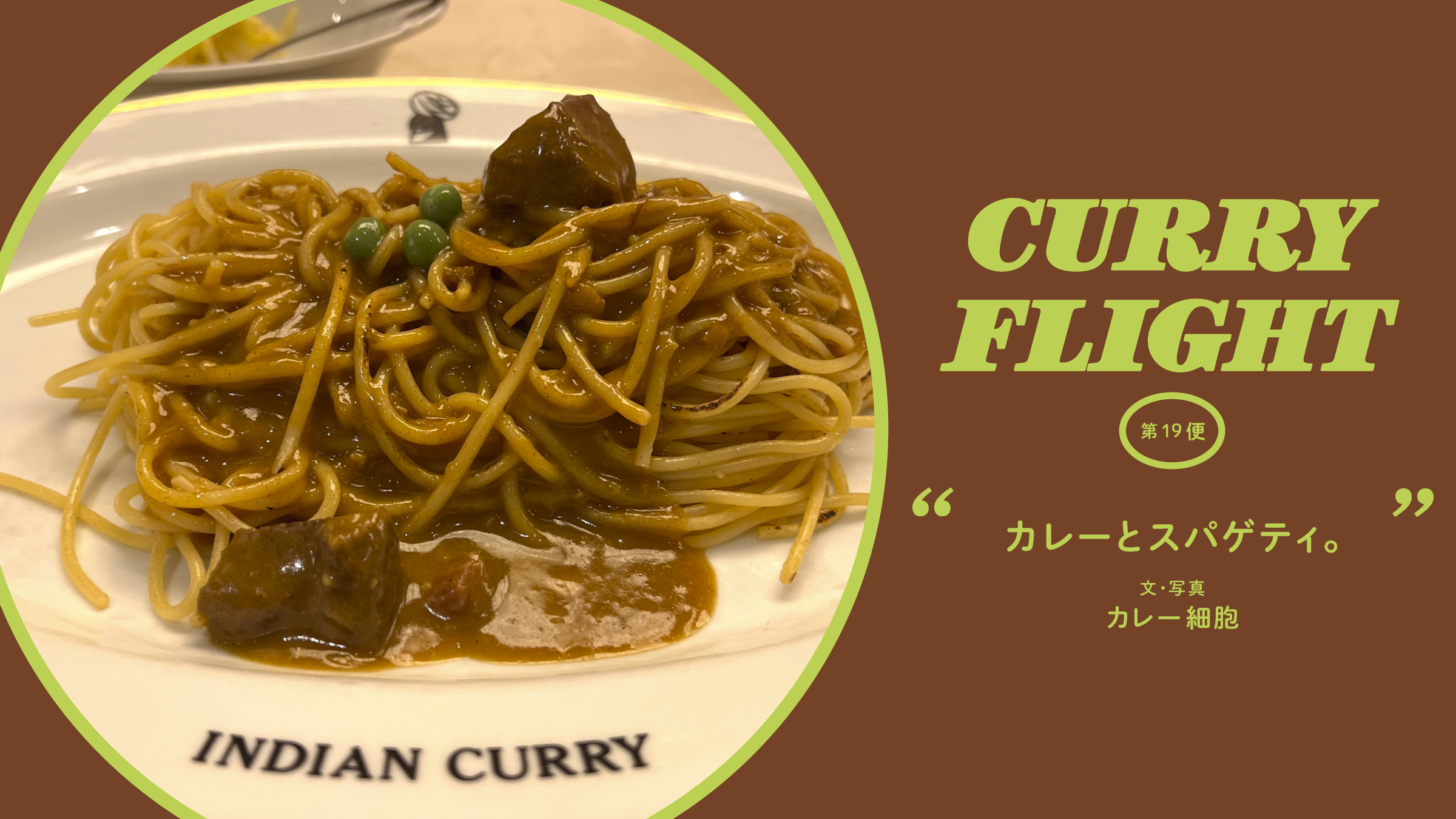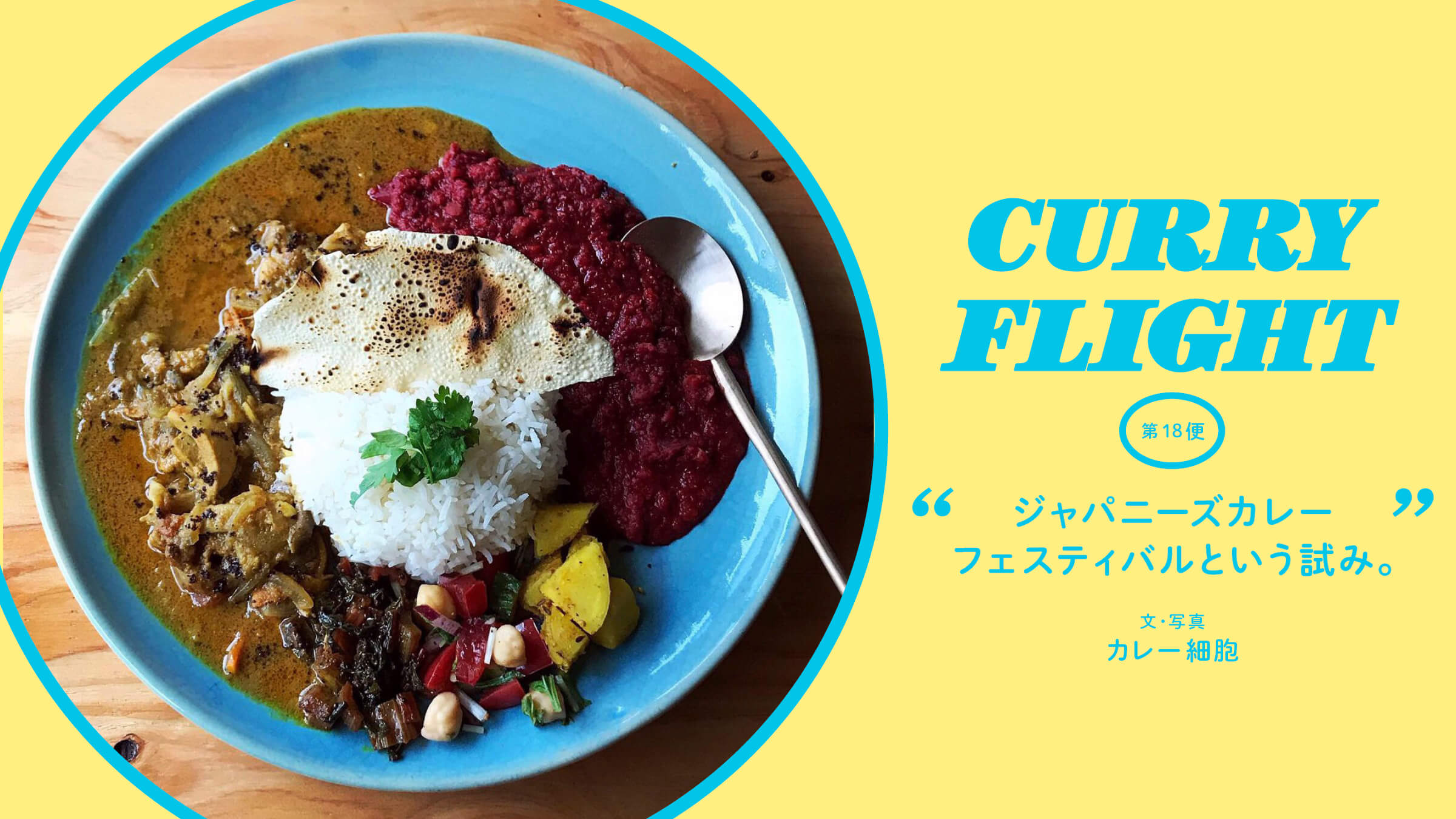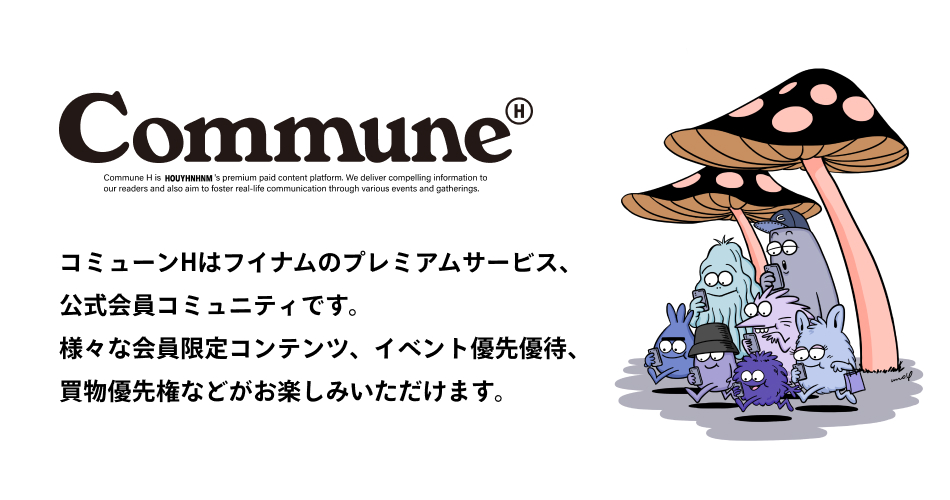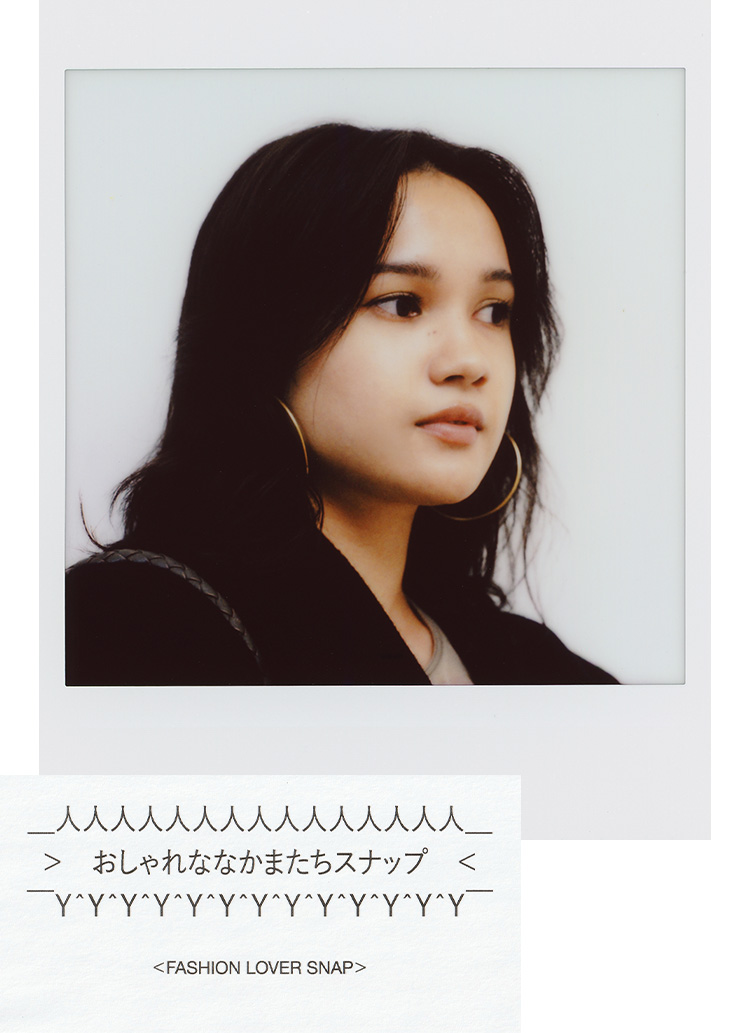Second Flight The world of dry curry.
Curry cells.
In this issue, let's take a little journey into dry curry, which has become a major axis of my curry life.
The origin is dry curry.
I started eating out for curry when I was in high school, in the 80s.
Indoya Honten," located in the old streets of Nagata, Kobe, was the first curry store I ever went to.
Two types of curry were offered under the catchphrase "Indian Surprise."
There are two types of curry rice: one is a curry rice with black pepper and the other is a dry curry mixed with rice and a raw egg, which is called "Unique Curry.
Later, however, the Great Hanshin-Awaji Earthquake caused a huge fire in the Nagata area.
When I went to the site a week later, I found a burnt-out area that I had only seen in documentary photos of air raids... and the Indoya head office building had disappeared without a trace.
I don't have any curry photos left from those days when I didn't have a digital camera, but here is a photo of the "unique curry" that I was later able to resume at a certain place.
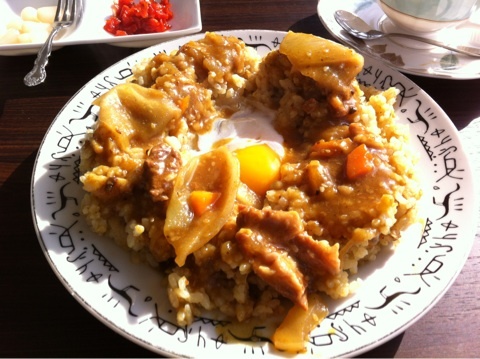
The unique curry of "Indoya Honten," which had been temporarily revived at Oragajaya.
While it is full of handmade flavor, don't you see the prototype of today's mainstream "reflected" dry curry, such as the raw egg dropped into the rice pit in the middle?
Where did dry curry originate?
When you hear the phrase "dry curry," two visuals probably come to mind.
One is the fried rice or pilaf type familiar from old-fashioned coffee shops. It is the one with green peas and raisins.
Another type is spicy keema (minced meat curry) on top of rice. Recently, there are more and more opportunities to encounter this type of curry as a café meal.
The origin of the former fried rice/pilaf type is honestly not certain.
Because it's hard to judge where to start and where to end dry curry, curry fried rice, biryani....
It is natural to assume that, at least in Japan, curry-flavored rice, similar to curry udon and other dishes, was first tried in the early 20th century when curry powder, which had been imported from England in the 19th century, was domestically produced.
And the latter dry keema topped rice type.
This one is actually said to have been born on a boat.
In the 1910s, dry curry was invented as a cafeteria menu for the Mishima Maru, a passenger ship of Nippon Yusen Kaisha (NYK Line), as it was easy to eat on a rocking ship and could be eaten even if seasickness dampened one's appetite.
The dinner menu of the time still contains the words "Lobster & Dried Curries," and this is believed to be the first recorded dry keema on rice type.
The restaurant that offers the taste of Mishimamaru with a modern twist is Marunouchi's Pollstar.
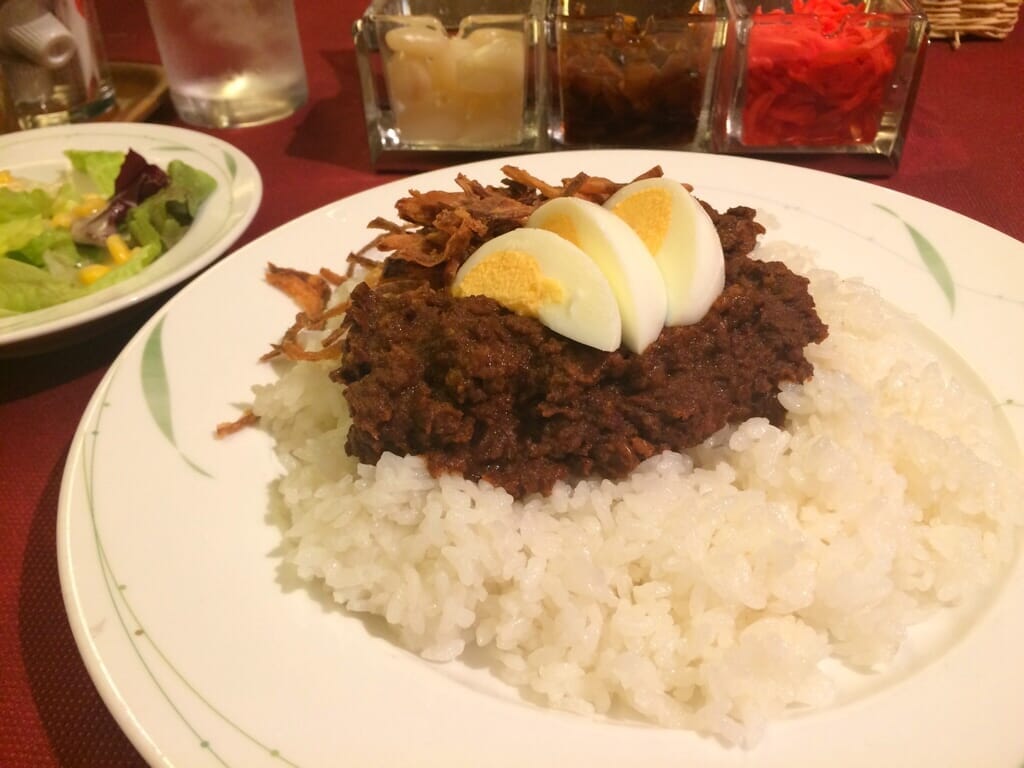
Dry curry from Pollstar. The texture of the fried onions also accentuates the curry.
If you like dry curry, you must try it at least once.
However, a quick question, "Where did dry curry originate?" the answer is not easy.
If we take a broad definition, "Dry Curry" = "Curry without soup".
Even the aforementioned dry keema, if not served on rice, has been around in India since ancient times, and there are even old documents that refer to it as "Dry Curry" in English. Even more so, Malaysian lundang and Bengali bhuna can also be called dry curry from the point of view of the straw. What about biryani? ......Let's stop here.
Dry curry and coffee.
The "Indo-ya Honten," which was the starting point of my food walking, had the catchphrase "Indians are amazed" and another one "unique curry and strong coffee.
Yes, for me, "the best coffee in the world is coffee after curry".
Coffee is especially special after a dry curry, where the spiciness and spices stay in the mouth without being washed away by the juices.
Dry curry and coffee, and the model for this combination is Nakano's Café Haiti.
Founded in 1976, this dry curry legend was once a fervent favorite in Shinjuku's West Exit, but closed for a time in 2011 and was revived in Nakano in 2016. (Note: Former franchisees continue to operate in Shinjuku and other locations.)
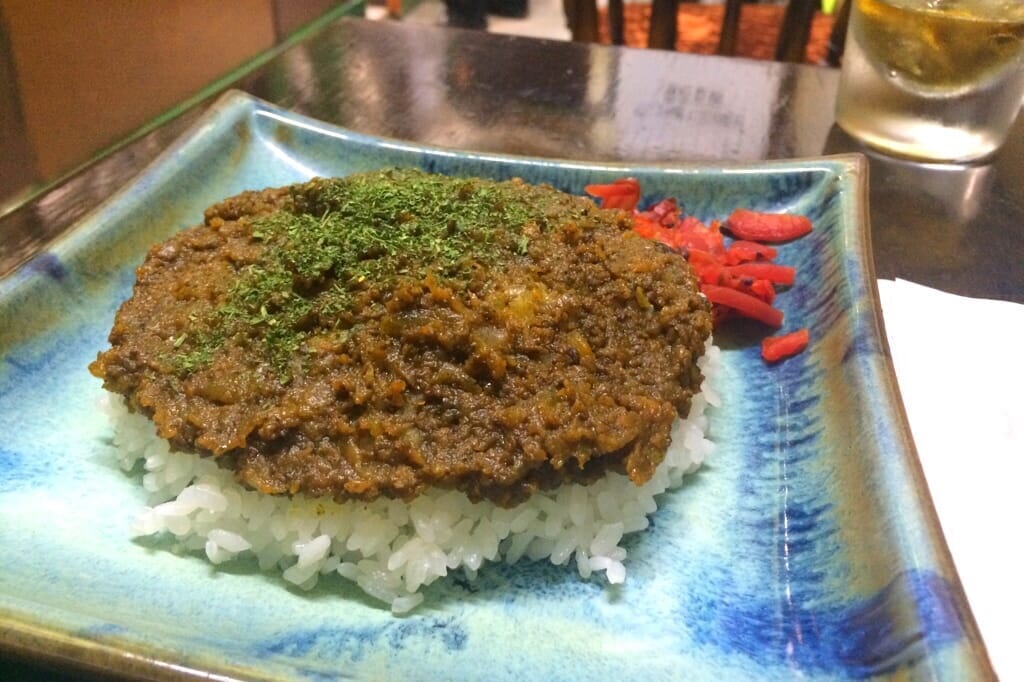
Dry curry at Cafe Haiti in Nakano. The impressive dish is KOBUSHI ware from Hokkaido.
The after-dinner coffee here is notable for its "aroma.
To prevent the aroma of the steam from escaping, a deep mug is used, and a splash of brandy on the table boosts the aroma.
Dry curry and design thinking.
Dry curry is solid. In other words, it is interesting as a formative element.
Not only is it beautiful and unique in appearance, but it also changes in taste and texture as you eat it, making it a true "design for eating.
In fact, it is no wonder that many of the chefs who create creative dry curries are from the design community.
MOKUBAZA" in Jingumae is the first name that comes to mind as a "dry curry that looks good.
The owner here also has a background in graphic design.
My favorite nut keema is the dry keema scented with black pepper and cardamom, the texture of nuts, and the yolk that melts in the middle, which is not only visually appealing but also enticing in its change of taste and texture.
Other variations such as "cheese keema" and "grilled avocado keema" are abundant and irresistible.
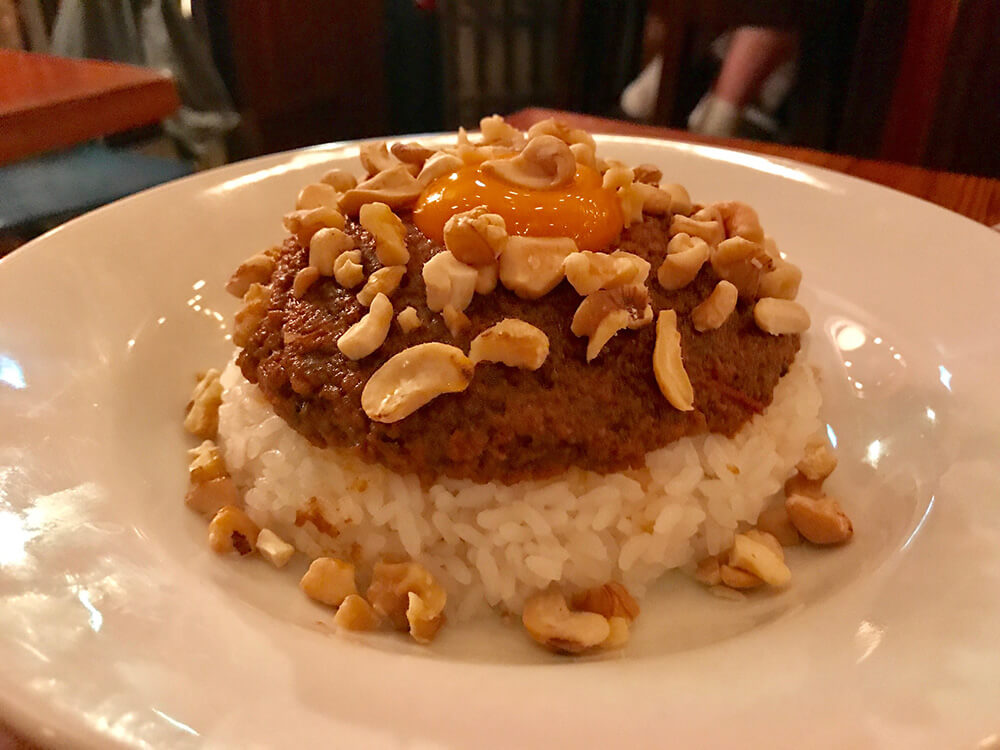
Nutty Keema" also provides a gusto of stimulation. The secret is Indian black pepper.
There are truly a wide variety of ways to enjoy dry curry.
Above all, the greatest attraction is that it is easy to get a sense of stimulation and tripping at any time.
We want to live a life as rich as dry curry, which is packed with spices, ingredients, stimulation and aroma.
Now, what kind of Flight should we try next time?
PROFILE
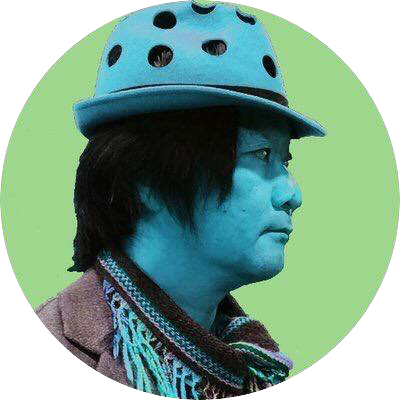
In pursuit of all kinds of curry and strange creatures. A spice radar by nature, he has visited more than 3,000 curry restaurants in Japan and abroad. He has been featured in many magazines and TV programs, and is a member of the Japanese Curry Awards selection committee.


